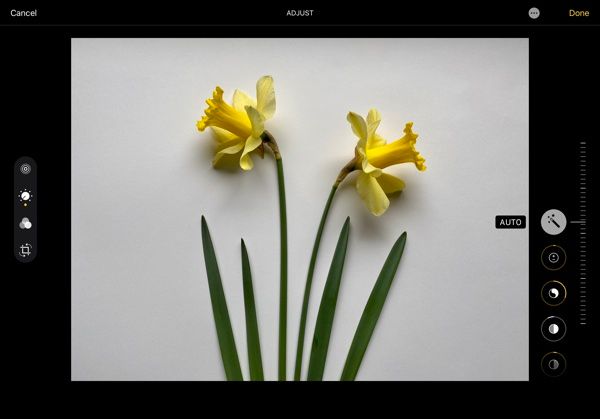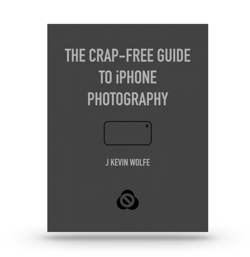What does the iOS Photos app Magic Wand Slider do?
Master Auto Enhance on your iPhone.

The Photos app’s Auto Enhance (Magic Wand) button was designed to “perfect” your images. It’s gotten even better in iOS 13, but ironically now has a slider. Whuh? If it’s “auto” and makes images perfect, why does it need a slider? This article explains the Auto Enhance button and its slider and shows you how to use them to perfect your images even more, er perfectly.
Here’s Apple’s description of the Auto Enhance button: Auto Enhance approaches the image how a pro photographer would, analyzing each and every pixel of the image and automatically adjusting the tonal extremes of the photo, bringing the important features, like deep blacks and properly exposed highlights, to the foreground.
You’d think that the Smart HDR and Deep Fusion in the new iPhone Pro cameras would make the photos perfect in the first place, but no camera yet is capable of doing that. What I’ve noticed is that the adjustments done when you tap the Auto Enhance button seem less drastic than they did in previous iOSs, so the cameras definitely continue to get better. The image of the daffodils above shows the exposure my iPhone 11 Pro chose with Smart HDR turned on.

Above is the Auto Enhance button’s call. You can see that by the couple notches of difference on the Auto Enhance slider to the right of the button that minimal correction was done. But what’s really going on when Auto Enhance does its thing?
According to Apple: As users increase or decrease Auto Enhance, they’ll see other adjustments—including Exposure, Brilliance, Highlights, Shadows, Contrast, Brightness, Black Point, Saturation, and Vibrance— intelligently change with it. Because every photo is unique, Auto Enhance is designed to optimize each photo in an intelligent way. Each editing adjustment relates to the others to create a balanced, properly exposed image. When a user taps the Auto Enhance button, the following steps happen:
- Image analysis Analyzes the tone curve of the full image using a histogram, and corrects for common lighting scenarios like a backlit or underexposed photo.
- Face detection Intelligently determines if there’s a face in the photo and adjusts the white balance, Warmth and Tint, to account for skin tone. This ensures that the automatic adjustments do not wash out the person’s skin tone.
- Sets initial adjustment values Sets the initial values for each adjustment, letting the user view the results. Each individual adjustment, like Brilliance or Vibrance, can then be independently controlled to fine-tune a single aspect of the user’s photo.
- Determines Auto Enhance range Generates the relationship between each of the adjustments for a specific shot, letting the user turn up or turn down the Auto Enhance effect using a macro slider that controls many adjustments at once.
As you can see, there’s a lot going on when you tap the Auto Enhance button.

The image above has the slider completely left or down. Apple again: As the user slides (left or down), Auto Enhance makes the image brighter without blowing out the highlights and affecting the image’s white balance. The more obvious effect is that the shadows are brightened to give the image a more even lighting. For altering most images, you’ll probably want to move the Auto Enhance slider left to down, as it’s likely to be the more pleasing direction.

Above, the image has the Auto Enhance slider full up or right. Apple on what’s happening: As the user slides (right or down), the effect darkens the image without losing shadow detail. This adds drama to the overall scene. As you can see, at its most intense the image can just looks contrasty and awkwardly underexposed.
It’s curious that whether you move the Enhance slider in either direction, most of the settings intensify in the same direction from the starting point. On this image only the Exposure slider (lightens when you move down, but unaffected when you move up) and the Brightness slider (brighter when you move down, darker when you move up) move differently.
My take.
Today we have a lot of photos adjustment sliders in the Photos app that we can monkey with. And to be quite honest, we can easily do our photos more harm than good if we’re not familiar with what each control does.
As opposed to thinking of the Auto Enhance button as a cure-all, I tend to use it as a starting point for editing. It usually gets me closer to where I want the photo to be. I often find myself dragging the Auto Enhance slider down or left a bit to lighten the image. Since I sell my photos as microstock on Twenty20, I’ve found that images that are a bit lighter than I prefer are more likely to sell. From here, I’ll typically tweak theVibrance and Brilliance sliders and add just a touch of sharpness.

Get the definitive book for mastering your iPhone camera: The Crap-Free Guide to iPhone Photography
